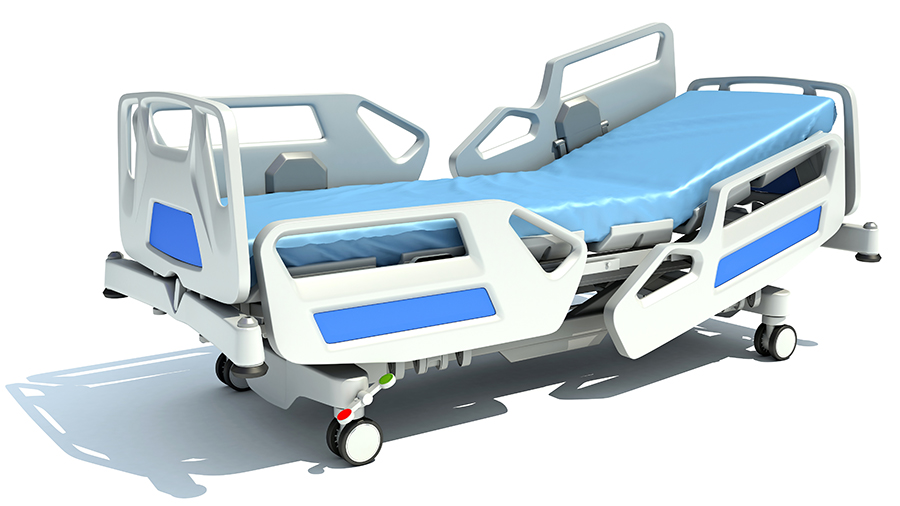Last Updated on 21/02/2024 by Sarah Sarsby
Written by experts from the BHTA Beds and Support Surfaces and Pressure Care and Seating Sections.
The ISO 20342 series of standards covers various aspects of safety, performance, and technical information relating to mattresses and related products, products described in the standards as “Assistive Products for Tissue Integrity” or “APTIs”. Part 1 of the series covers General Requirements, and these are applicable to all APTIs. The information set out within the general requirements standard is intended to help ensure the safety of users.
The devices covered by this standard include all pressure redistributing mattresses and overlays manufactured using a range of materials including foam, gel, air, and foam in combination with air (i.e. hybrid mattresses). Products within the scope of this standard also include all reactive (non-powered) and active (powered) mattresses and overlays. This standard does NOT include wheelchair cushions.
Aspects relating directly towards the clinical efficacy of a product (and therefore the safety-related properties in prevention or management of pressure injuries, for example) are not addressed in this standard, but are topics covered by tests prescribed in other parts of the ISO 20342 series.
The aim of this article is to give the reader a feel as to why they should be aware of the standard’s content and provide an overview of what the standard covers in depth, and therefore its importance in the design, selection, and use of an APTI.
BS EN ISO 20342-1 is the first mattress and related device international safety standard. It sets the minimum threshold a device should reach in order to protect the safety of users.
BS EN ISO 20342-1 covers the key safety elements from an APTI-specific standpoint. These include management of potential hazards and addresses specific areas of mechanical, electrical, and materials safety. Table 1 contains a summary of the areas covered by the standard.
| Clause | Content |
|---|---|
| 4. General requirements and safety | 4.1 General; 4.2 Intended use; 4.3 Risk management; 4.4 Usability; 4.5 Design controls; 4.6 Clinical evaluation; 4.7 Foreseeable misuse; 4.8 Test conditions; 4.9 Lifting and carrying means |
| 5. Safety requirements | 5.1 Information supplied by the manufacturer; 5.2 APTI that can be dismantled; 5.3 Resistance to corrosion; 5.4 Noise and vibration; 5.5 Sound audible acoustic energy; 5.6 Default indicators; 5.7 Feedback |
| 6. Flammability | 6.1 General; 6.2 Flammability; 6.3 Moulded parts used as enclosures for electrical equipment |
| 7. Mechanical safety | 7.1 Prevention of traps; 7.2 Moving and folding parts; 7.3 V-shaped openings; 7.4 Surfaces, corners, edges and protruding parts; 7.5 Folding and adjusting mechanisms; 7.6 Instability hazard; 7.7 Temperature of parts in contact with skin; Ergonomic principles; Additional considerations |
| 8. Safety of electrical equipment | 8.1 General; 8.2 Electromagnetic compatibility; 8.3 Liquid ingress; 8.4 Interruption of power supply; 8.5 Hold to run activation; 8.6 Emergency stop functions |
| 9. Biocompatibility | 9.1 Biocompatibility and toxicity; 9.2 Animal tissue |
| 10. Contamination | 10.1 Liquid ingress; 10.2 Cleaning and disinfection; 10.3 Cross infection and microbial contamination |
| Annex A. General Information | A.1 General; A.2 Design controls; A.3 Packaging; A.4 Noise and vibration; A.5 Flammability; A.6 Ergonomic principles; A.7 (EMC) immunity; A.8 Cleaning and disinfection; A.9 Moisture vapour permeability/microclimate management |
| Annex B. Environmental and consumer related guidance | Covers Hazardous Substances in an APTI. B.1 General; B.2 All materials; B.3 Textiles; B.4 Plastic materials; B.5 Metals; B.6 Wooden parts |
| Annex C. Periodic inspection |
This standard clearly sets out the expected safety requirements for all mattress surface devices, irrespective of which medical device classification they fall into. To deliver safe, effective, harm-free care to patients, it is not unreasonable to assume the use of devices which meet the required level of safety and do not inadvertently introduce any additional risks to users.
With pressure ulcers recognised as a preventable harm and pressure ulcer incidence metrics typically reported at board meetings as a key indicator or care quality, it is prudent for providers to use products that meet the required levels of safety.

Clinicians will benefit from clear statements around the intended use, intended users, and any device claims around performance and safety, including minimum and maximum user weight on the device.
Furthermore, supporting documents, such as the clinical evaluation and instructions for use, will give additional information about the suitability of the device for local patients/residents. Requesting relevant evidence as part of a tender process will help ensure that claims of device performance are substantiated with appropriate levels of evidence and supporting documentation. This can be particularly helpful when looking to substantiate claims for self-certified, Class I medical devices, which are otherwise externally-unregulated devices.
Where manufacturers’ products align with this standard, it demonstrates that the manufacturers are seeking to attain minimum levels of device safety and that their claims around device performance can be supported by suitable data and evidence, thereby giving clinicians peace of mind when prescribing the products for patients.
Medical device manufacturers typically strive to deliver the safest, most effective products to the market. Since elements of BS EN ISO 20342-1 will apply to every APTI sold in the UK it would be a concern to understand why a manufacturer would not want their products to comply with this standard.
Healthcare providers can help encourage uptake of these standards by listing compliance as a prerequisite on mattress tender submissions. If manufacturers need to comply with specific elements of the ISO 20342 series of standards (e.g. Part 1, General Requirements) to be considered for the tender, this would greatly encourage this area of the medical device industry to meet the requirements for BS EN ISO 20342-1:2002.
BS EN ISO 20342-1:2022 – TC | 31 Aug 2022 | BSI Knowledge (bsigroup.com)
For a broader background to the ISO 20342 series of APTI standards, see the BHTA article: ‘New standards for testing mattresses and related products – An Introduction’